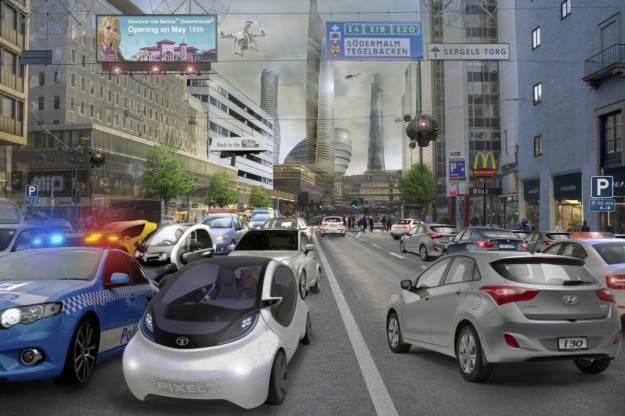
Maybe it’s not as bad as “Soylent Green”; but it still doesn’t sound very appealing.
“The economy recovered from that early recession – but at the cost of citizen trust in the government. Investors and business people grew protective of their assets, and everyone scrambled to create wealth. Only a few were successful …”
These are not the opening lines of some dystopian science fiction novel. They’re from a crowdsourced vision of what inner Stockholm could become by 2050, if current trends are allowed to run amok: the city is reduced to a corporate-branded playground for the rich, choked with automobile traffic and crumbling infrastructure. And good luck waiting for the bus.
This scenario, and other more heartening alternatives, were compiled by the Post Car(d) Urbanism project at KTH Royal Institute of Technology. And even though they pertain to Stockholm, you could also look at Post Car(d) Urbanism’s multiple outcomes as a warning — and opportunity — for most mature cities around the world.
The lead researcher, Alexander Ståhle, explains that the visions of the future were compiled based on trends sourced from 400 city and transportation experts. Using this data, they came up with three possible scenarios each for the inner city, inner suburbs and outer suburbs. Then they presented the nine scenarios to the public to vote on what they prefer.
And they have a great blog where they explain the trends behind each scenario, as well as artistic representations.
Happily, most people voted against the scenario where automobile use is left to run its natural course, at the expense of public space and healthy urban life. The more popular scenarios had a technology and environmental influence, which shows me that people really don’t believe that auto-centric lifestyles are sustainable over the long haul.
And, it indicates that public investment in planning will continue to be supported as long as the ideas create opportunities for all to enjoy a reasonable quality of life in what is bound to become a very crowded world.
David Callahan
